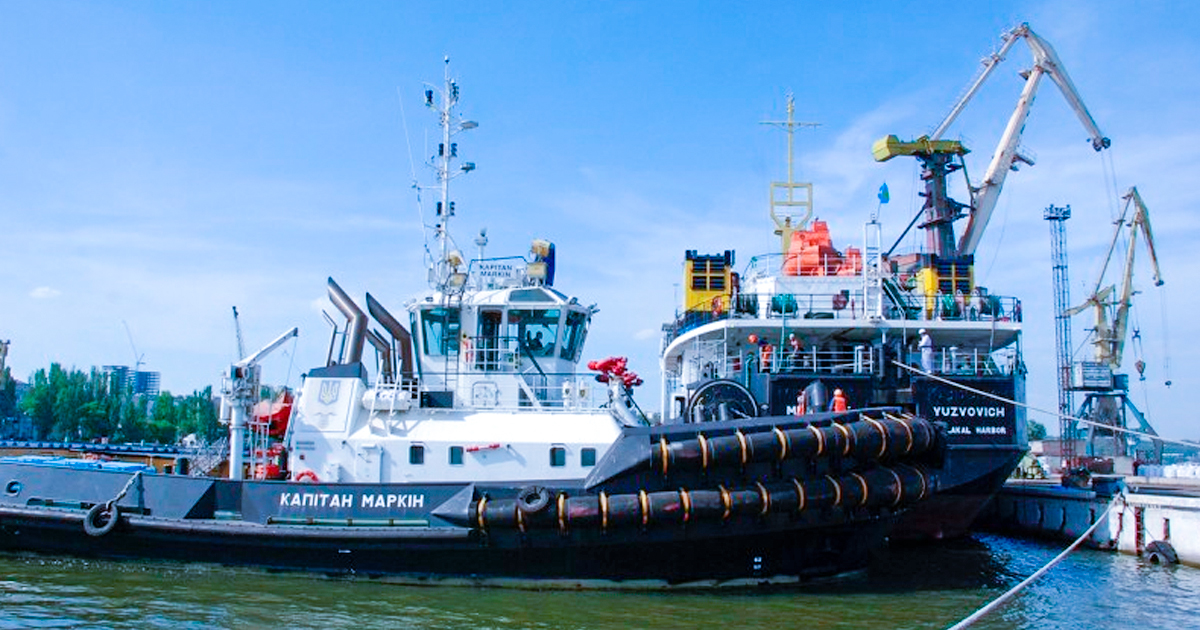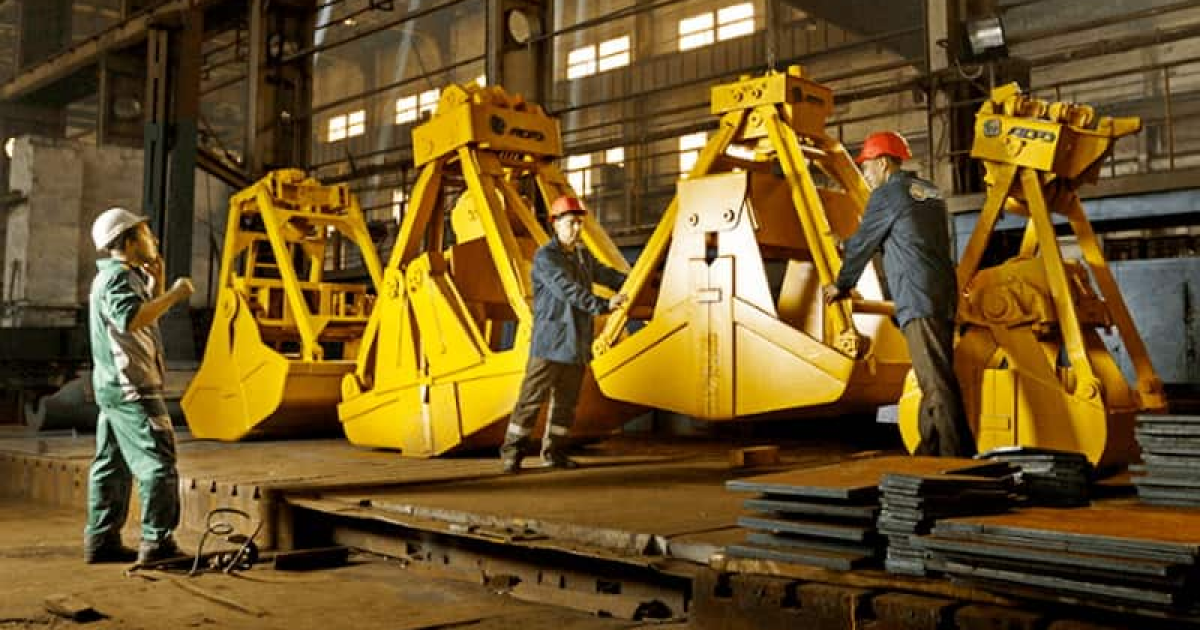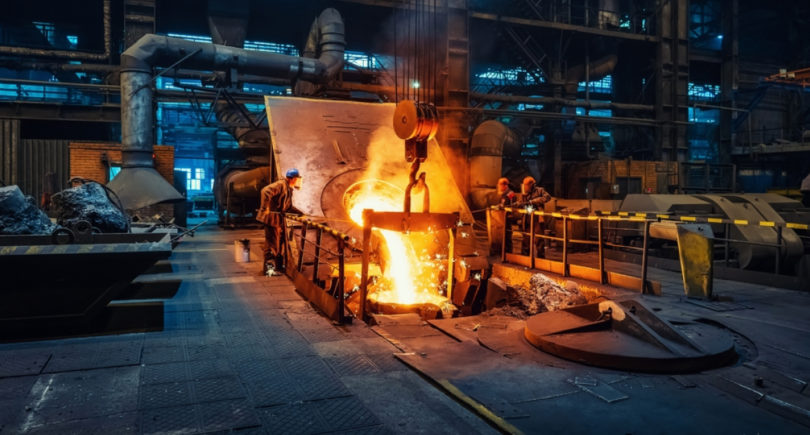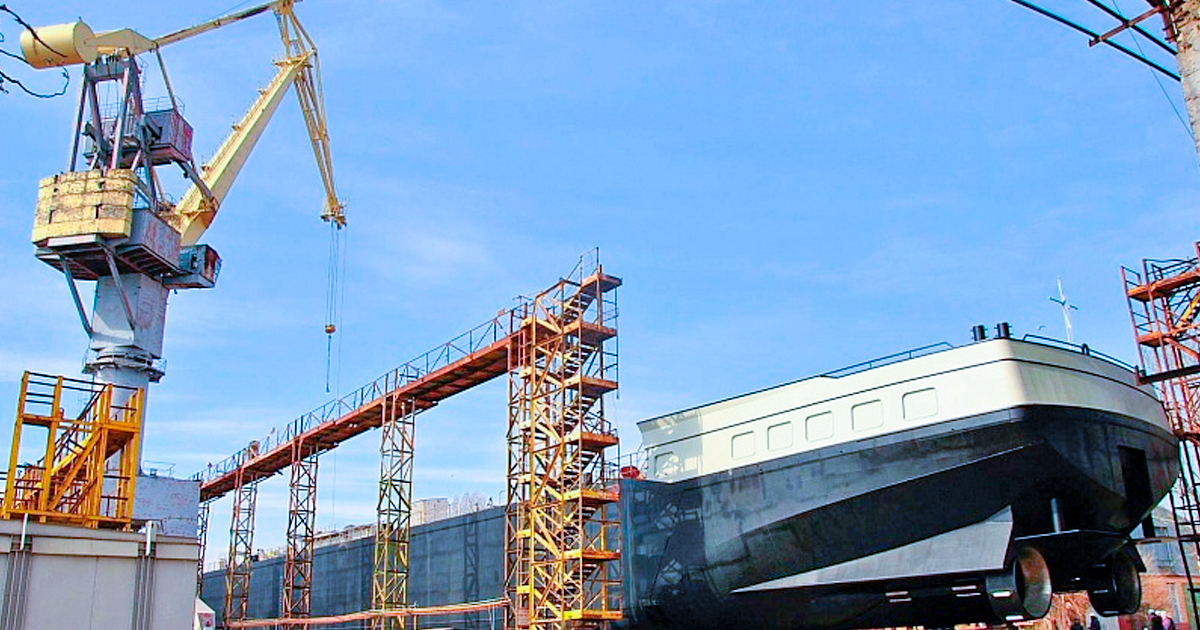
Posts Industry shipbuilding 1601 05 September 2019
In H1 2019, the shipbuilding market leaders launched eight multi-purpose watercrafts
Ukrainian shipbuilding continues to recover after a long fall. In the first half of 2019, Nibulon Shipyard, Kuznya na Rybalskomu PJSC and Smart Maritime Group (SMG) remained the industry leaders. During that period, Ukrainian shipbuilders continued to master three areas and achieved certain success: construction of river-sea ships for their own needs (Nibulon), construction of ship hulls for Western customers (SMG) and military shipbuilding (Kuznya na Rybalskomu).
GMK Center decided to find out what ships our shipbuilders built and how much steel was used for that purpose, and at the same time refresh the industry statistics for the previous periods.
Updated statistics
According to the updated statistics of Ukrsudprom Association, the volume of products sold by Ukrainian shipbuilding companies in 2018 totaled almost UAH 3 billion. This is by 32% more than in 2017.
The cost of ship repair services last year amounted to UAH 501 million (+47% compared to 2017). But sales of shipbuilding products dropped by 15% to UAH 1.2 billion. A part of the ships was delivered in 2019.
According to Ukrsudprom, in 2017–2018, 25 vessels were built for the domestic market, and three exported. In the same period, 263 and 108 watercrafts were repaired respectively.
For the second year in a row, the number of jobs in the shipbuilding and ship repair industries was growing (by 495 jobs in 2017 and by 442 in 2018). In total, over 5 thousand people work at shipbuilding companies. Almost 3 thousand of them are engaged in shipbuilding and ship repairing.
Nibulon
In H1 2019, the list of leaders in the Ukrainian shipbuilding market remained unchanged. During that period, Nibulon commissioned four POSS-115 tugboats. 16 cargo and passenger ships have undergone repair and scheduled maintenance at the shipyard.
“By the end of this year, the shipyard will commission two self-propelled scows. The powerful Nibulon Max 140-meter-long self-propelled loader with two crane parts and 10 thousand tons’ granary will be launched on 20 September. The P140 vessel is a complex engineering structure as well as the longest river-sea crane vessel built over the past 25 years of Ukraine’s independence and in the entire history of the plant,” the Nibulon press service wrote.
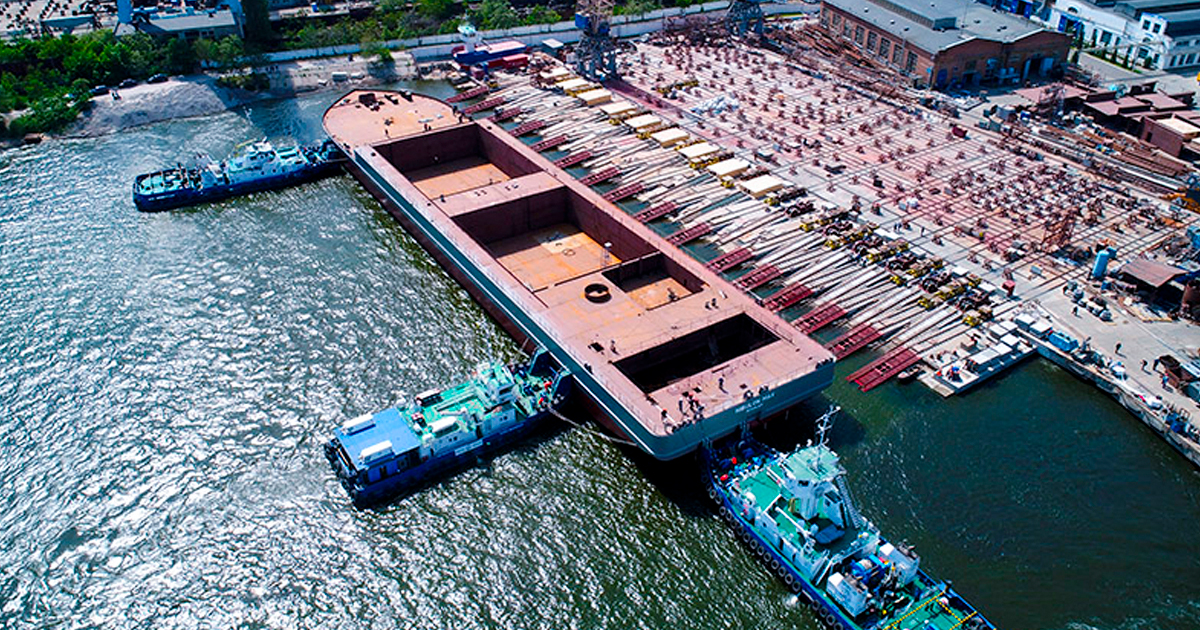
Launching Nibulon Max – nibulon.com
The plant is further planning to build four non-self-propelled open-type vessels, two port tugboats etc. The company’s fleet will be approximately 80 vessels by the end of 2019, and in financial terms, ship production will grow by about 30%.
“According to the production program for 2020, four non-self-propelled vessels and two positioning tugboats with a capacity of 1,600 hp will be built as well as a series of non-self-propelled vessels. The company also plans to build a non-self-propelled oil tanker and a modern inshore boat,” Nibulon added.
Smart Maritime Group
In March, at SMG Mykolaiv and Kherson shipyards, two chemical tankers of the same type were commissioned for Dutch VEKA Shipbuilding WT B.V. Their construction began in 2018. The cost of this contract exceeds UAH 145 million. The second batch of coamings for the Chelsea-type dry-cargo ship is also under construction at Mykolaiv shipyard, the dry-cargo ship is being built by Kherson shipyard based on the Volgo-Don max vessel.
Construction of the third chemical tanker has begun at Kherson shipyard. In general, in 2019, SMG plans to bring production results to UAH 800 million (+31%).
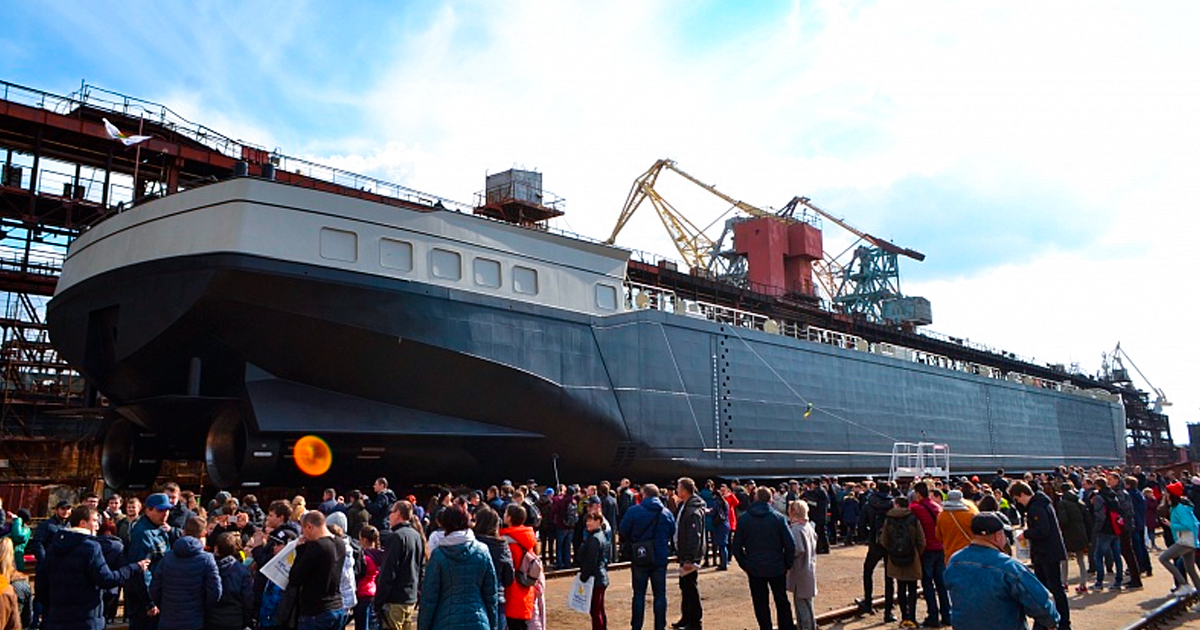
Launching the tanker for the Dutch VEKA Group – smart-maritime.com
Kuznya na Rybalskomu
This year, another small armored artillery Gyurza-M boat and a medium reconnaissance ship built on the basis of a fishing trawler were launched at Kuznya na Rybalskomu PJSC. The company also laid down another boat, Gyurza-M, and Centaur assault landing boat.
However, in connection with the change of ownership, the prospects of the plant regarding further construction of military boats and/or civilian vessels are not yet clear.
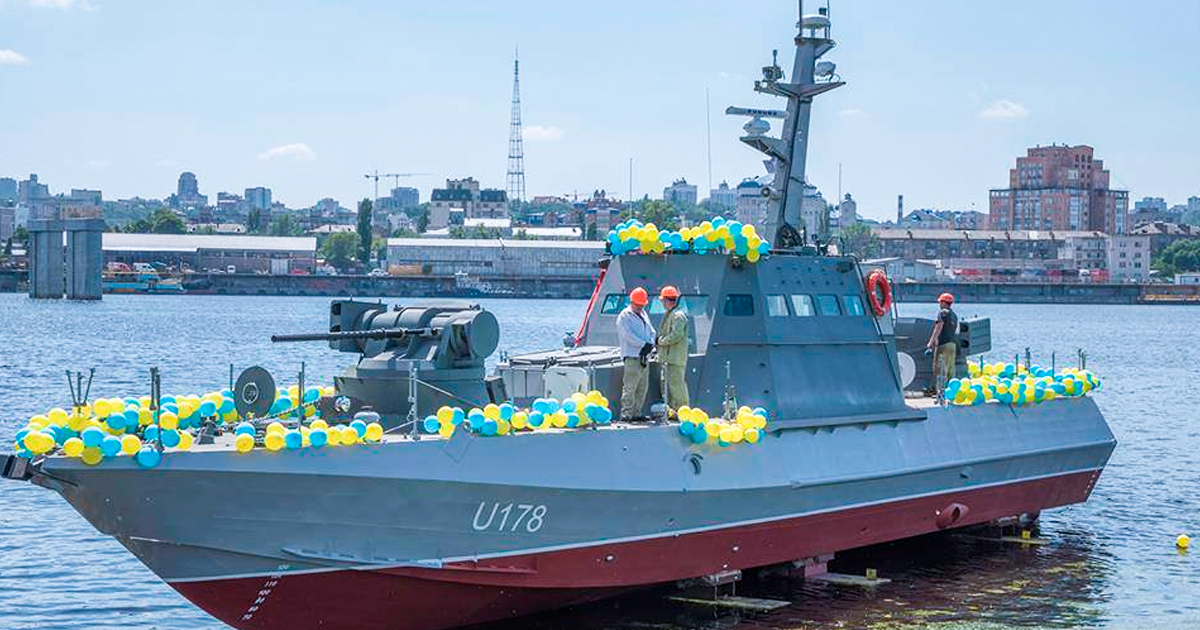
Launching a Gyurza-M-type boat – facebook.com
Ship repair
Ship repair works are a large portion of activities within the industry. Thus, in the first half of the year, Illichivsk Shipyard repaired 28 vessels. Repairs of another 30 boats are ongoing.
According to Oleg Turskyi, Director General of SRZ LLC (Azov Shipyard), 10 ships, mainly small and technical state-owned vessels and commercial cargo vessels, have been repaired since the beginning of 2019. Currently, several ships are simultaneously undergoing different repair stages at ship repair sites. In the floating dock, docking of Sborshchik-306 AMPU is under completion.
The company’s 2019 work schedule has already been approved: it will repair 25 vessels in total, while its annual capacity is 120 vessels. According to the agreements reached, in 2020, the ship repair plant is going to repair about 50 vessels intended for various purposes.
Ship repair works are also performed by other companies in the industry: Izmail Dunaisudoservice Shipyard, Mykolaiv Ocean shipbuilding plant and others.
Nikita Bespalyi and Captain Markin took part in the docking of Mekhanik Yuzvovich – asrz.com.ua
Non-core products
It should be noted that shipbuilding companies also produce various steel products and structures. In the total volume of products manufactured at Ukrsudprom plants in 2018, such “non-core” products accounted for more than 30%. Thus, Azov Shipyard manufactures grapples of various sizes for bridge and portal cranes, as well as frame and modular steel structures.
In its turn, Ocean plant produces bridge structures that were used, for example, in the construction of the pedestrian & bicycle bridge over Volodymyrskyi Descent in Kyiv.
Coke production grapple – sudostroy.com
Steel consumption in the shipbuilding industry
According to GMK Center’s estimates, shipbuilding and ship repair needs of large companies do not exceed 20-30 thousand tons of rolled steel per year. In 2018, the volume of steel products sold by Metinvest to shipbuilding and ship repair companies in Ukraine amounted to about 20 thousand tons.
Nibulon is the largest consumer of steel among shipbuilders. The company used about 4.5 thousand tons in the first half of 2019. In 2018, the company consumed 6.4 thousand tons of shipbuilding steel.
Nibulon is building a 140-meter-long self-propelled loading crane P-140 Nibulon Max. It took about 5 thousand tons of steel to build the hull and hatch covers. The steel consumption plan for the current year is approximately 7.4 thousand tons in total.
SMG is another major consumer of shipbuilding steel. More than 2.4 thousand tons of shipbuilding steel produced by Ilyich Iron and Steel Works of Mariupol were used for the construction of two chemical tankers of the same type with a deadweight of more than 5 thousand tons (110 m length, 13.5 m width, 6.6 m side height). In 2018, 2.3 thousand tons of steel were consumed in SMG’s shipbuilding segment. The plan for 2019 is approximately 4.4 thousand tons for shipbuilding and 3 thousand tons for ship repair.
In H1 2019, SRZ ship repair plant consumed around 500 tons of steel. Last year, steel consumption at the plant amounted to 2.5 thousand tons, including about 200 tons for ship repair purposes.
Improvement measures
Today, China, South Korea and Japan account for more than 80% of the global shipbuilding industry. In these countries, various preferences — state guarantees, subsidies, soft loans — were provided for the development of shipbuilding at different times. In 2000–2005, Ukraine also had a special tax incentive system, which brought rather good results. The net result of the tax experiment for the national budget amounted to UAH 4–5 billion (in 2018 prices).
That is why Ukrsudprom association insists on providing special conditions for shipbuilding, i.e. tax benefits for the industry and other types of organizational preferences:
- exemption from import duties on products for shipbuilding;
- exemption from VAT on imported products intended for shipbuilding;
- use of income tax from shipbuilding for the development of shipbuilding;
- introduction of export lending (before the launch of the Export Credit Agency);
- encouraging domestic ship owners to build ships at our shipyards on a voluntary basis.
As part of these proposals, Ukrsudprom promotes the draft law on the government support to the shipbuilding in Ukraine by introducing special regulatory conditions, as well as initiates the creation of a free customs zone and SEZ Mykolaiv.
To stimulate shipbuilding, Nibulon, on its part, offers to cancel the following:
- fee for drawing and/or raising bridge trusses for ships built in the territory of Ukraine and floating under the Ukrainian flag;
- fee for passage through the locks of the Dnieper cascade for ships built in the territory of Ukraine and floating under Ukrainian flag;
- rent for special use of water;
- excise tax on fuel for river vessels or introduce its full or partial compensation.
In addition, Nibulon offers to stimulate construction and procurement of ships. For that purpose, according to the company, it is necessary to adopt a respective law to give a boost to placing orders at Ukrainian plants and require the use of at least 40–50% of materials of Ukrainian origin. Except for those types of ships, the construction of which is impossible in Ukraine.
With an effective system of government support, shipbuilding will give a boost to other industries (mechanical engineering, steelmaking etc.). According to the estimates of the Center for Transport Strategies and Ukrrichflot, one dollar of investment in shipbuilding generates several dollars of consumption in related industries. If we take river transport as a basis, then to meet the demand of 32 million tons, we need to build more than 250 river fleet units. This will require more than a $1.6 billion investment. Over 10 years, these investments will generate more than 8.3 thousand jobs, a $2.6 billion consumption growth in related industries, about $732 million of budget allocations and more than $1 billion of wages.

